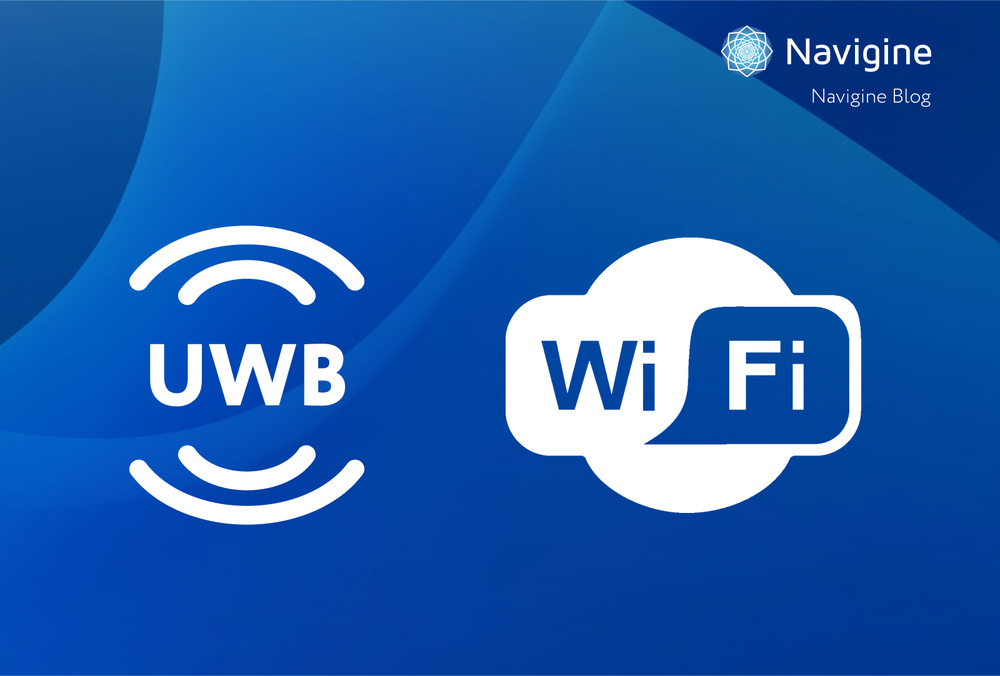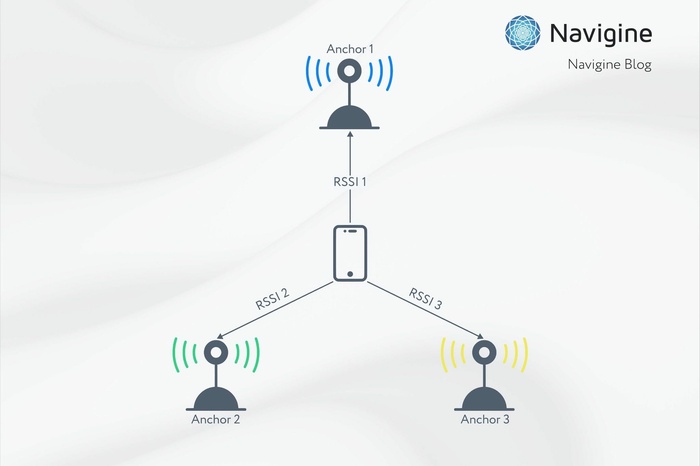Defining location in the context of the Internet of Things acquires more and more importance in all spheres of life. In comparison with outdoor geolocation, the working indoor navigation environment is more complicated and its technologies are more varied. At present, Wi Fi RTLS (Real-Time Positioning System) and Ultra Wideband UWB technology are often used for indoor positioning. Both of them have specific features that have to be considered while selecting the optimal way for object monitoring. What are the differences between these two systems? Which of them is better for locating people and assets?
UWB: Basic Features
Ultra Wide Band is a protocol of wireless connection that uses high-frequency electromagnetic radiation for positioning. Thanks to quick impulse sending, it has a higher potential in indoor navigation and helps in creating high-capacity networks.
The implementation of Ultra-WideBand RTLS into the company’s infrastructure ensures a wide range of advantages:
- Minimum requirements for power supplies.
- Possibility to support hundreds of channels simultaneously.
- High signal power.
- Device compatibility using radio frequency spectrum.
- Possibility of simultaneous application as a personal, local or global network.
- Exact object localization and tracking.
Specific features of Wi-Fi technology for indoor positioning
The RTLS using Wi-Fi was first launched for indoor navigation in 2010. Since then it has become increasingly popular and started to be applied in many spheres. Wi-Fi positioning technology is a wireless communication system that functions by means of defining the signal level and its further conversion into the distance.
The advantages of the technology are:
- Possibility of system deployment without cabling.
- Easy customization.
UWB and Wi-Fi RTLS Comparison
In order to simplify for users the choice between these two systems, let’s compare these indoor positioning technologies, WiFi vs UWB.
- The main difference between UWB and Wi-Fi lies in the fact that ultra-wideband technology has a higher accuracy, which significantly widens the possibilities of its application for indoor positioning. Ultra-wideband accuracy resulted from the system’s ability to perform updates about 10 times per second and locate objects within 5mm, which is much more than 1 m in the case of location-based WiFi.
- UWB can track a bigger number of assets at large distances. It can detect with high accuracy where in the room the object is, while Wi-Fi-based RTLS provides information only about the presence or absence of the asset in the required room.
- Ultra WideBand RTLS sensor gives less interference. While using Wi-Fi, similar tags make noise and deteriorate the quality of data transmission, which reduces possibilities for localization.
- What concerns the cost of technology implementation into the infrastructure, Wi-Fi is cheaper. The tags, which are used for realizing the UWB-based navigation, have a higher cost in comparison with the tags used for Wi-Fi, Bluetooth, or RFID. Because of this, the system is preferred when it’s necessary to track expensive objects whose safety is placed above navigation costs.
| Parameters | Technology | |
|---|---|---|
| Wi-Fi | UWB | |
| Object identification accuracy | 1–5 m | 0.1–0.5 m |
| Spheres of application | Industry, medical institutions, transport, trading, offices, etc. | Industry |
| Implementation costs | Medium | High |
| Energy consumption of the smartphone without recharging | 1–2 days | 5–6 hours |
When is it recommended to use UWB and Wi-Fi RTLS technologies?
The choice between this or that way is guided by the tasks that the system has to solve.
Thanks to low requirements for power supply, UWB is recommended in case of increased sensitivity to radiofrequency. The ability of the system to perform scanning at a high resolution ensures its efficiency in radiolocation systems. Moreover, the UWB localization system will be relevant in the industry since its high accuracy allows monitoring even the smallest production processes (such as commodity tracking at production).
Wi-Fi system can be used in various spheres – industry, logistics, healthcare, retail, etc. Its main advantage is the possibility to be installed into the existing Wi-Fi infrastructure, which considerably reduces implementation costs for the company.
Navigine specializes in implementing indoor positioning systems into the work of enterprises, hospitals, shopping centers, and other places. Customers are provided with efficient geolocation services that can help in developing and improving business processes.
If you have any questions or a business project, related to UWB or Wi-Fi, feel free to fill out the feedback form or book a free online meeting.




